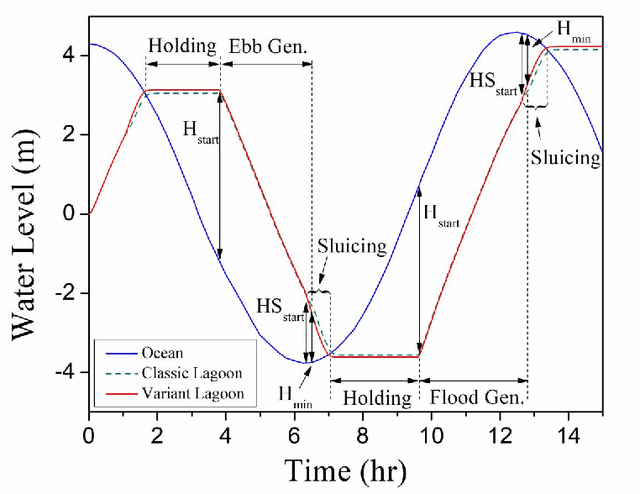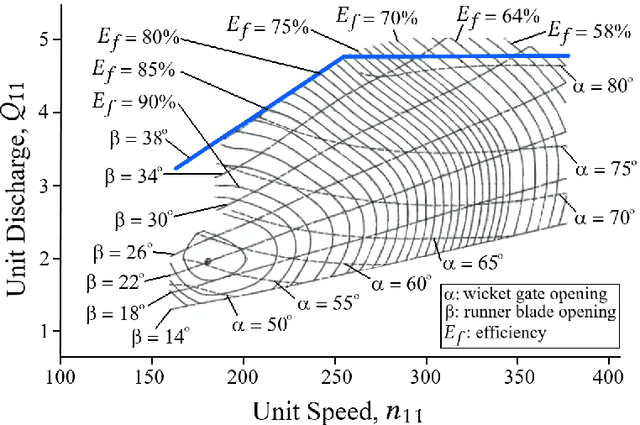Prediction-Free, Real-Time Flexible Control of Tidal Lagoons through Proximal Policy Optimisation: A Case Study for the Swansea Lagoon
Paper and Code
Jul 16, 2021



Tidal range structures have been considered for large scale electricity generation for their potential ability to produce reasonable predictable energy without the emission of greenhouse gases. Once the main forcing components for driving the tides have deterministic dynamics, the available energy in a given tidal power plant has been estimated, through analytical and numerical optimisation routines, as a mostly predictable event. This constraint imposes state-of-art flexible operation methods to rely on tidal predictions (concurrent with measured data and up to a multiple of half-tidal cycles into the future) to infer best operational strategies for tidal lagoons, with the additional cost of requiring to run optimisation routines for every new tide. In this paper, we propose a novel optimised operation of tidal lagoons with proximal policy optimisation through Unity ML-Agents. We compare this technique with 6 different operation optimisation approaches (baselines) devised from the literature, utilising the Swansea Bay Tidal Lagoon as a case study. We show that our approach is successful in maximising energy generation through an optimised operational policy of turbines and sluices, yielding competitive results with state-of-the-art methods of optimisation, regardless of test data used, requiring training once and performing real-time flexible control with measured ocean data only.
 Add to Chrome
Add to Chrome Add to Firefox
Add to Firefox Add to Edge
Add to Edge